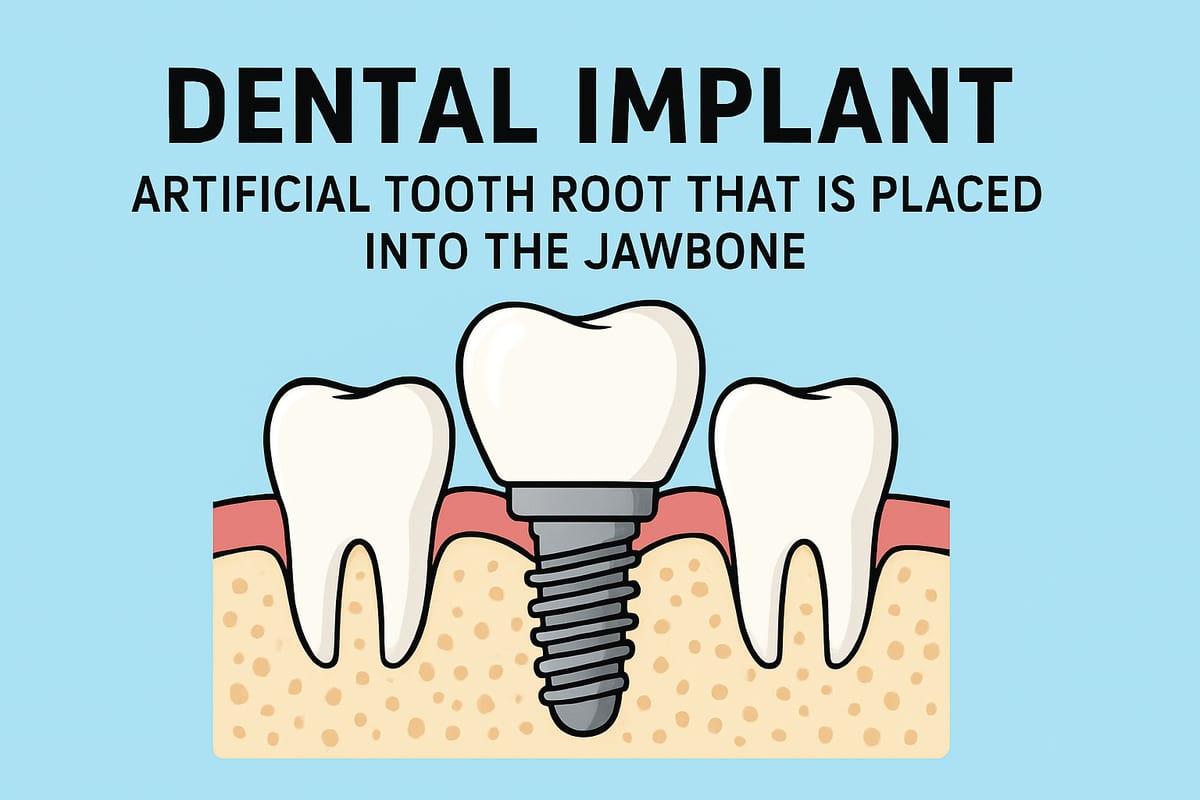If you want a quick answer, here it is: define dental implant — a dental implant is a permanent tooth replacement that acts like a natural tooth root and holds a crown, bridge, or denture. It’s placed in the jaw to support a new tooth that looks and works like the real thing.
This post will cover a basic definition, the main parts and common types, who can get implants and the treatment steps, key benefits and risks, and simple next steps so you know what to do if you’re interested.
Define dental implant: a simple explanation
A dental implant is a small, strong post (usually titanium) placed into the jawbone to replace the root of a missing tooth. Once the implant bonds with bone, it can hold a crown, bridge, or denture so you can bite, chew, and smile with confidence.
People choose implants for durability, better chewing function, and a natural appearance.
Main parts and common types of dental implants
The three basic parts
- Implant: the titanium screw placed in the jawbone.
- Abutment: the connector that sits on the implant and holds the tooth.
- Crown or denture: the visible tooth replacement attached to the abutment.
Common implant types
Endosteal: the most common type, placed directly in the bone.
Subperiosteal: sits on top of the bone under the gum when bone is low.
Mini implants: smaller posts used for limited space or to stabilize dentures.
All-on-4 / full-arch: uses four or more implants to support a full set of upper or lower teeth.
Who is a good candidate and what to expect during treatment
Who qualifies
Good candidates are adults in generally good health with enough jawbone to hold an implant. Your dentist will do an exam, X-rays, and possibly a CT scan to check bone and plan treatment. Smokers or people with uncontrolled health issues may need extra care or treatment first.
Step-by-step treatment overview
- Consultation: exam, imaging, and a treatment plan.
- Implant placement: the screw is placed into the jaw (often with local anesthesia).
- Healing / osseointegration: the implant bonds to bone — usually weeks to a few months.
- Abutment and crown: a connector and final tooth are attached once healed.
- Follow-up: regular checkups and good home care keep the implant healthy.
Typical timelines vary: single implants can take 3–6 months from start to finish; full-arch options sometimes offer faster provisional teeth.
Benefits, risks, costs, and next steps
- Top benefits: better chewing, clearer speech, prevents bone loss, natural look and feel.
- Common risks: infection, need for bone grafts if bone is low, implant failure (rare), and typical surgical risks like swelling or discomfort.
Costs vary by case; insurance may cover part of the work but often not the full cost. Many offices offer payment plans or financing to help.
A local dentist can evaluate whether implants suit you and explain options. Call or book an exam to get a personalized plan and next steps.



